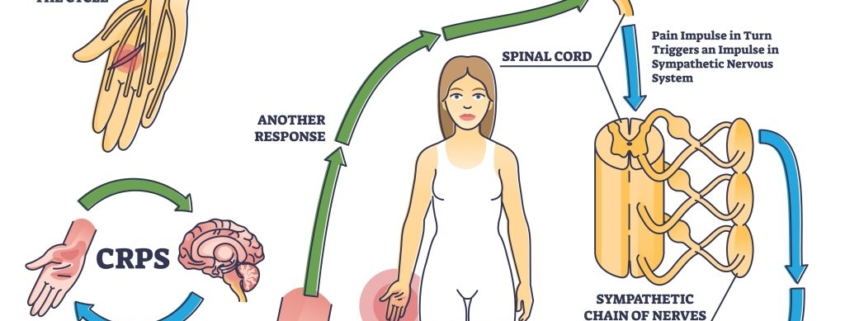
Complex Regional Pain Syndrome
Overview
Complex Regional Pain Syndrome (CRPS) is a chronic pain condition affecting the arms, legs, hands, or feet. It typically arises after an injury, surgery, or event that triggers a cascade of pain signals in the nervous system. Best estimates suggest that CRPS affects between 1.5 and 3.4 million people worldwide, though the condition remains somewhat misunderstood due to its broad range of symptoms and triggers.
Types
There are two types of Complex Regional Pain Syndrome:
1. Type 1 (CRPS-I): This type, previously referred to as Reflex Sympathetic Dystrophy (RSD), typically happens after an illness or injury that didn’t directly damage the nerves in the affected limb. About 90% of people with CRPS have type 1.
2. Type 2 (CRPS-II): Once known as causalgia, this type follows a distinct nerve injury. Despite the different types, the treatment, and prognosis for both are similar.
Causes
CRPS often begins after a trauma, surgery, or some other form of injury. While the exact cause is unknown, it’s believed that it may involve abnormal inflammation and changes in the nervous system. In CRPS, the patient’s pain is significantly greater than what would be expected from the injury, indicating that the body’s response to the injury has become abnormal.
Symptoms
CRPS symptoms vary from person to person. Common symptoms may include:
1. Continuous, intense pain that worsens over time
2. Sensitivity to touch or cold
3. Swelling in the affected area
4. Changes in skin temperature, color, or texture
5. Joint stiffness or damage
6. Changes in nail or hair growth
Less common symptoms can include muscle spasms, changes in muscle coordination, and even paralysis or dystonia (abnormal muscle contraction).
Diagnosis
There is no single test to diagnose CRPS. Instead, doctors will inquire about the patient’s medical history and the nature of the pain. Diagnostic imaging like X-rays, MRIs, or bone scans may show changes in the affected area. Blood tests could help rule out other conditions.
Treatment Options
CRPS has no known cure, but its symptoms can often be managed effectively. The main goal of treatment is to relieve pain, improve physical function, and enhance overall quality of life. Treatment options may include:
1. Medications: Pain relievers, corticosteroids, antidepressants, anti-seizure drugs, and topical analgesics might help with pain and inflammation.
2. Physical Therapy: Regular exercise can improve blood flow, reduce pain, and restore mobility.
3. Nerve Blocks: These injections can provide temporary relief from nerve pain.
4. Psychotherapy: Cognitive behavioral therapy can help patients learn strategies to cope with pain.
In severe cases, surgical treatments, such as spinal cord stimulation or implanted drug pumps, may be considered.
Living With Complex Regional Pain Syndrome
Living with CRPS can be challenging, but several strategies can help manage symptoms:
1. Lifestyle Changes: Regular exercise, balanced nutrition, and adequate sleep can help improve the overall health and reduce the severity of symptoms.
2. Medication Management: Regularly taking prescribed medications and notifying the doctor about any side effects is crucial.
3. Coping Strategies: Activities such as meditation, deep breathing, and other relaxation techniques can help cope with pain and reduce stress.
When to Seek Help
It’s critical to seek immediate medical attention if severe, persistent pain is experienced, especially if it’s accompanied by swelling, changes in skin color or texture, or abnormal hair or nail growth. Early treatment may help prevent the condition from worsening over time. Please consult your healthcare provider if you experience any issues managing your CRPS, or if your symptoms get worse.
